COVER STORY

Students on Ho Plaza.
What we talk about when we talk about 'diversity'
You move to a new community. It seems strange at first; you're surrounded by all kinds of people. How do you engage with them while you find your way and contribute your unique skills and perspective?
This is a common experience for most Cornellians, from new students and faculty to top administrators. New arrivals hear about "diversity" in student orientation programs like Tapestry or during onboarding for new employees. But as with individual conceptions of identity, diversity can have different meanings for everyone.
"I think diversity means inclusion of everyone and everything; making sure that the underrepresented and the privileged get a chance to understand each other and where everybody comes from," says E-chieh Lin, coordinator of the Intergroup Dialogue Project, a course that develops active listening, dialogue skills and empathy. "That understanding creates awareness, and that creates diversity."
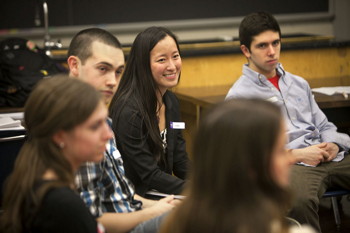
Intergroup Dialogue Project coordinator E-chieh Lin, center, works with students. See larger image
"It's more than getting along," says Katelyn Fletcher '15, a human development and education student. "It's about understanding each other, living together and being able to build relationships across differences."
Diversity goes beyond racial or ethnic signifiers; it applies to various identities, including veterans, people with disabilities, and differences in socioeconomic background and sexual orientation.
Developing appreciation for such difference and diversity – and ensuring access to opportunity and inclusion for all – is an ongoing process at Cornell.
"There are growing pains, and the transformation doesn't happen without strain," says A.T. Miller, associate vice provost for academic diversity.
Diversity: Key to excellence
Inclusion at Cornell is woven into the fabric of the university, reflecting the egalitarian goals of its founders. "Any person … any study" embodies a diversity of ideas and community members alike.
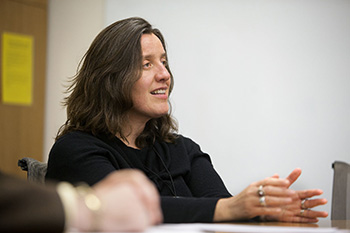
Yael Levitte, associate vice provost for faculty development and diversity; she also is one of Cornell's five University Diversity Officers. See larger image
In his recent Martin Luther King Day message to the Cornell community, President David Skorton connected to the living value of that founding vision: "Today we continue to maintain a deep institutional commitment to diversity and inclusion as prerequisites to discovery, creativity, excellence and the meaningful exploration and exchange of ideas."
Achieving excellence is a common goal at Cornell. To reach that goal, "we are accumulating new perspectives and broader knowledge, and building on the value of inclusion," Miller says.
Toward New Destinations, established in 2012, advances the ideals of the university's 1999 vision statement "Open Doors, Open Hearts, Open Minds" and is Cornell's most collaborative and inclusive diversity initiative ever, says Lynette Chappell-Williams, associate vice president for inclusion and workforce diversity. It provides colleges and units with a framework for their own innovative approaches to improve campus culture, while addressing challenges affecting student life and faculty and staff retention, and engaging with alumni, retirees and the local community, she says.
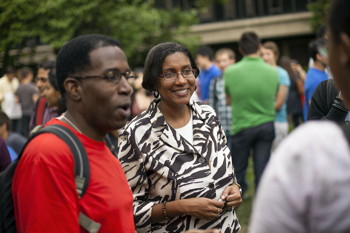
Sheri Notaro, center, Graduate School associate dean for inclusion and professional development; she also is one of Cornell's five University Diversity Officers. See larger image
The number of multiracial students admitted to Cornell has skyrocketed, says Juliette Ramírez Corazón, assistant dean of admissions and advising in the College of Arts and Sciences, "and it's bringing in new conceptualizations of identity … [the campus] is becoming so global and so mixed."
About a third of Cornell's undergraduates are either low-income, the first in their families in a bachelor's degree program, or traditionally underrepresented by race or ethnicity, Miller says. Also, 48 percent identify as students of color or are from outside the United States.
With more than 40,000 undergraduate applicants now, Cornell also has become increasingly selective. The result, Miller says, is an enhanced educational environment, greater diversity of all types and higher-caliber students.
All these factors have an impact on success after college as well.
"Cultural identities shouldn't be ignored; they should be nurtured," says Jay Waks, ILR '68, Law '71, who has long advocated for diversity and inclusion for his corporate clients and in organizing programs at Cornell. "They hold extraordinary value for corporations and for society. This interest in the valuing of differences has become the cornerstone for corporate progress."
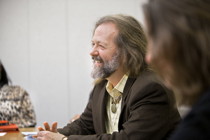
A.T. Miller, associate vice provost for academic diversity; he also is one of Cornell's five University Diversity Officers. See larger image
Faculty strategies
Faculty candidates from historically underrepresented groups "often receive multiple offers from other institutions," says Yael Levitte, associate vice provost for faculty development and diversity. To help attract more women and scholars of color, she says, "we provide competitive grants to departments who hire faculty underrepresented in their fields and in earlier stages of their careers who may benefit from the additional research experience without the pressures of the tenure track."
Cornell holds interactive workshops to "educate our faculty about unconscious bias in the search process and how to address it so it is reduced," says Levitte, whose office also coordinates mentoring support, networking and professional development opportunities, tailoring programs to a group's specific concerns.
Such efforts are working; in the College of Engineering, for example (overwhelmingly male for much of its history), women now hold 30 percent of the assistant professorships.
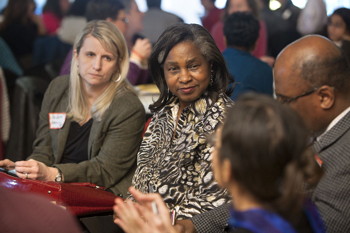
Lynnette Chappell-Williams (center, meeting with campus diversity leaders), associate vice president for inclusion and workforce diversity; she also is one of Cornell's five University Diversity Officers. See larger image
Several fields, however, face challenges. "In the biomedical sciences, as in other STEM [science, technology, engineering, mathematics] fields, there are still very few minority scientists. This creates a cycle of fewer mentors" for students of color, says Avery August, professor and chair of microbiology and immunology in the College of Veterinary Medicine.
Even with programs and funding support in place for research and training, August says, "there remain significant hurdles for such underrepresented students, including family expectations, financial barriers and remaining majority bias regarding whether they can be successful scientists."
To increase the diversity in his field, he says, "It will require fresh thinking and efforts … to provide opportunities for exposure to research and role models."

Renee Alexander '74, associate dean of students and director of intercultural programs; she also is one of Cornell's five University Diversity Officers. See larger image
Student issues
Conversations about difference among students at Cornell often focus on a lack of opportunity and awareness, or dialogue between different groups. Fletcher says students tend to befriend people who are naturally similar to themselves. "I think you can go through Cornell and not have a diverse experience, based on what you choose," she says. "I had to seek out those diverse experiences."
"There's something about the atmosphere that makes students not want to make waves," says East Asian studies graduate student and Fulbright scholar Dexter Thomas, who worked with undergraduates for three years.
In Cornell's biannual Perceptions of Undergraduate Life and Student Experiences (PULSE) survey, half of the black students responding reported that they felt threatened by others, Thomas says. The same survey showed "that white students are two times or more likely to be recruited to do research than a black or Asian student, who had to find those opportunities on their own."
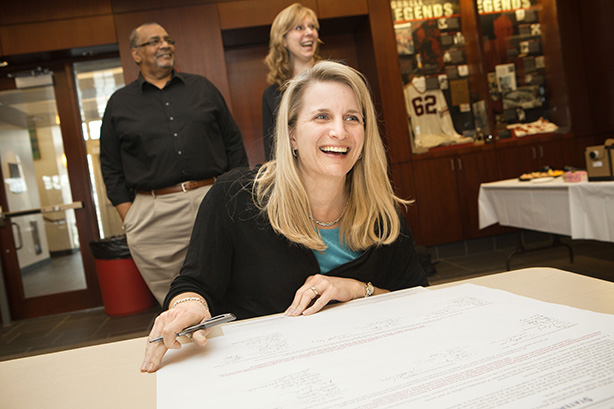
Andrea Haenlin-Mott, co-chair of Facilities Services' Diversity Committee, signs a statement reaffirming Facilities Services' commitment to diversity.
Shared responsibility and accountability are better than leaving solutions up to one group or the administration, says immunology Ph.D. student Chavez Carter, former Black Graduate Professional Student Association president and currently on the Graduate Diversity Council.
"You have to look at the commonalities between different people," Carter says. "If, say, the Latino community is being affected, or the Asian-American or African-American community, I can't say, 'That's not my problem.' It's not the differences involved; it's a shared equality. Equality sometimes gets lost in discussions of diversity."
Bias incidents on and off campus last year involving racial epithets and cultural insensitivity prompted the Student Assembly to begin to mainstream diversity awareness in Cornell student organizations through United Student Body, a seven-year diversity and inclusion plan modeled on Toward New Destinations, setting policy guidelines for all student groups.

Katelyn Fletcher '15. See larger image
"The university set up a framework and issued 150 or so initiatives," Student Assembly President Ulysses Smith '13 says. "We wanted to focus on bridge-building and decided to insert ourselves into the conversation."
In its first year, 2013-14, United Student Body targeted 42 of the largest student organizations with many more to be added each year. The Student Assembly also is reviewing all organization charters to eliminate exclusionary language, removing institutional barriers (e.g., setting accessible meeting locations) and reaching out to the traditionally underserved, such as veterans and LGBT students.
"The bias incidents are disheartening, but instead of preaching to people, I say let's go to them and walk and talk with them," Smith says.
Numerous resources, clubs and residential options are available to diverse student populations. Safe spaces for productive dialogue between different groups include the recently revived Breaking Bread series and "programs like Intergroup Dialogue and Tapestry, structured ways to teach about and understand a large intercultural experience," says Renee Alexander '74, associate dean of students and director of intercultural programs.
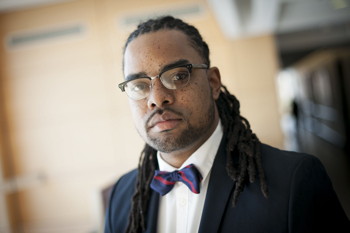
Chavez Carter. See larger image
The Intergroup Dialogue Project (which won the university's Perkins Prize in early March) is structured around "three main processes that create change," says Fletcher, who calls the course "transformative." She took it last spring, and she and Lin are adapting it for this year's Cornell Summer College high school students. "The first is on a personal level – becoming more self-aware. The second process is interpersonal – how you relate to other people and being sensitive to others. The last process is through action," in projects on campus and in local communities. "We ask them, 'How do you want to make an impact on Cornell in promoting social justice?'"
For new graduate students, "President Skorton and graduate and professional student peers [including Thomas] discuss ways to navigate the culture of Cornell and take advantage of a diversity of academic and social opportunities" in an orientation video, "Graduate Students, Graduate Stories," says Sheri Notaro, Graduate School associate dean for inclusion and professional development.
Thomas served undergraduates for three years, as a graduate resident fellow and an assistant residence hall director. "If the administration is serious about inclusion of minority students on campus, there are two easy, immediate steps" that can be taken, he says: "mandatory training of RAs on racial and ethnic diversity and inclusion" and "a first-year, mandatory one-credit course focused on inclusion, particularly of race and class."
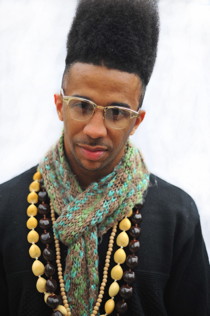
Dexter Thomas. Photo: Cornell Daily Sun. See larger image
Various student organizations have backed the freshman course idea for years, Thomas says; it would "contribute to the development of each student as a citizen of the world, and to the mental health and well-being of every student as a member of our community."
Disability and inclusion
"Diversity is important to every element of what we do," says Americans with Disabilities Act campus coordinator Andrea Haenlin-Mott, co-chair of Facilities Services' Diversity Committee. "We are trying to facilitate a values-based approach. We value everyone, to make them feel they have a place."
Haenlin-Mott has herself lived with a disability for 25 years. "Not always do we really see people with disabilities as being able to contribute effectively to our society. I always say the biggest problems are attitude and a lack of expectation." Attitude, she says, "is so important to the overall feeling of what I'm able to contribute as a person."
Cornell's comprehensive disability access plan parallels Toward New Destinations' inclusion efforts, and awareness is closely tied to inclusion, she says. Haenlin-Mott is making people aware of such services as assisted listening systems at more than 100 campus locations and of the need to caption all video content.
"Cornell spends a lot of time removing physical and programmatic barriers, but, ultimately, it's about people and how people feel – not only systems or programs," she says. "We are working hard at creating and promoting an inclusive environment for all people, and all members of the Cornell community have a hand in making that happen."
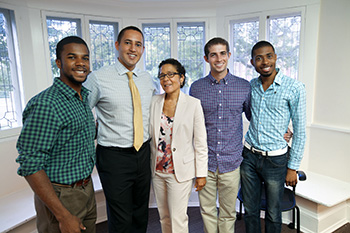
City of Ithaca Mayor Svante Myrick '09, second from left, meets with students and Associate Dean of Students Renee Alexander, center, director of intercultural programs, at 626 Thurston, the Cornell Center for Intercultural Dialogue. See larger image
Engaging alumni
Matthew Carcella, director of Diversity Alumni Programs, says the Division of Alumni Affairs and Development is committed "to making sure that every alum feels included and represented in all things Cornell." The organizations Diversity Alumni Programs serves include six identity-based alumni associations and their umbrella organization, Mosaic (see related End Note in this issue).
Official affinity organizations established by black, Latino, Asian and Asian-American, LGBT, Korean and Native American Cornellians "have been good at coming together as alumni with a common or shared interest," Carcella says, but "there are a lot of individuals we may not be reaching."
In light of changing demographics – as younger members of racial, ethnic and other diversely identified groups join a traditionally older, white alumni population, "we are having conversations on how to diversify our college advisory councils," he says, with an eye toward strategic programming "that synthesizes larger diversity conversations rather than individual constituencies."

Mosaic members, including Anika Daniels-Osaze '96, right, participate in a diversity program at the 2013 Cornell Alumni Leadership Conference in Boston. See larger image
"There are many ways that our alumni can engage with the university around issues of diversity and inclusion," he says. "They can get involved in an alumni association or Mosaic, join a committee, host a regional event, participate in a conference or simply attend an event."
For example, black alumni health professionals are speakers, mentors and recruiters at the Black Biomedical and Technical Association Conference each February at Cornell's Africana Studies and Research Center. About 100 students attend, and "a strong group of 25 alumni and health administrators talk about the dynamic work they are doing," says Anika Daniels-Osaze '96, minority affairs and enrichment programs director at SUNY Downstate Medical Center in Brooklyn.
"This year there was a focus on international work, so they discussed opening clinics in other countries and treating people who have not had access to treatment for years," says Daniels-Osaze, also president of the Cornell Black Alumni Association. "At this conference there was a panel of medical students who I counseled at some point as undergraduates. It's good to see the work you are doing actually make a difference."
New approaches
As all Cornell colleges and units implement diversity efforts, some new approaches include:
Focus on achievement: The College of Agriculture and Life Sciences is creating a seminar, "Diversity Across the Disciplines," to increase awareness of diversity issues among faculty and students, and is introducing new courses this fall that satisfy its undergraduate diversity requirement.
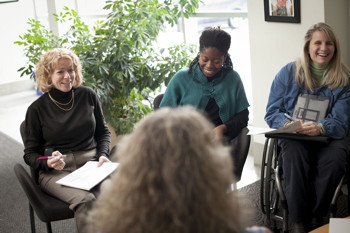
Maria Cimilluca, left, senior director of facilities management. See larger image
"Our URM [underrepresented minority] students graduate at the higher end of the spectrum when looking across the university," says student development specialist Catherine Thompson. Future efforts, she says, will focus on achievement to help them "gain the skills and make the connections they need to move on to the next level."
The college also provides numerous summer internship opportunities for URM students through Cornell Cooperative Extension and is seeking to increase its regional Native American and international student populations.
Medicine and service: Weill Cornell Medical College in New York City is recruiting students who want to work in underserved areas, working on pipelines for URM pre-med students and continuing its outreach programs for young people – from Cornell Kids, for sixth- and seventh-graders in Spanish Harlem, to Weill Cornell Youth Scholars, a summer program run by medical students.
The Travelers Summer Research Fellowship offers early research opportunities for underrepresented pre-med students from around the country, which "have really made a huge difference" for them, says Elizabeth Wilson-Anstey, Weill Cornell assistant dean for student affairs. "On their campuses they may be one of a few black or Latino pre-meds," she says. "The program gives them a sense that they can do it."
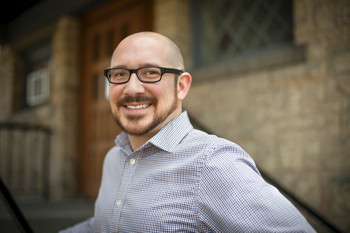
Matthew Carcella, director of Diversity Alumni Programs. See larger image
Talking circles: To improve diversity recruitment of staff and make Cornell more accessible to the local community, Facilities Services established a Building Inclusive Leaders Initiative and organized a Talking Circle on Race and Racism with Ithaca's Multicultural Resource Center last year. The division plans to train staff to facilitate future circles, intended to strengthen relationships across differences.
"The talking circles gave people the opportunity for self-reflection, sharing experiences and influencing each other's perspectives and attitudes," says Maria Cimilluca, senior director of facilities management.
Transfer initiative: An upcoming pilot program in the College of Human Ecology seeks to ensure a diverse pool of transfer student applicants by targeting URMs and/or first-generation students from community colleges. The initiative's first partner will be Santa Monica College in California.
"Since community colleges attract a high percentage of URM students, it provides another avenue for diversity," says Paul Fisher, Human Ecology's senior associate director of admissions. Santa Monica, he says, was selected for its academic reputation and its geographic and ethnic diversity.
The initial focus is on students in social sciences fields related to human development. The effort will engage Santa Monica transfer counselors and Cornell admissions staff in California. Laura Gray '66, MAT '67, who teaches at Santa Monica, will help identify key faculty members to contact there.
"We intend this to be a long-term relationship," Fisher says, "and we could develop this for other Cornell colleges as well."
Inclusion and potential
Inclusion isn't necessarily about "fitting in," as differences remain important distinctions of identity and provide the broadest range of perspectives and experience.
"Individuals are encouraged to maintain their diversity, in search of excellence. They don't need to change a strongly asserted identity," says Laura Brown, senior vice provost for undergraduate education and co-chair of the University Diversity Council, which implements diversity initiatives.
Ultimately, diversity across the university relates to the value of its people, Brown says: "This is about access and justice, and the expanded realm of potential talent that should be considered for inclusion."
Lesley Yorke, public affairs officer for university communications, contributed to this article.
More information:
Diversity at Cornell
Toward New Destinations
Cornell Chronicle diversity coverage